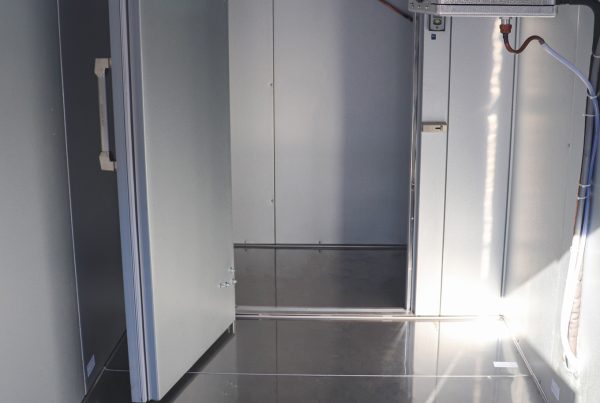Restaurants are supposed to be checked by health inspectors twice a year. Walk-ins can be a source of food safety violations if not properly maintained and cleaned. If you run a restaurant you can also be stuck with fines totaling thousands of dollars or face temporary closure of your establishment. After the restaurant is closed, an inspector will generally return within 24 hours and will continue to visit until these violations are resolved and the restaurant can reopen.1 Lost days of operation can cost your business not only revenue, but your reputation as well.
One restaurant in New York paid a total of $8,600 in fines from a food inspection, including $1,200 directly relating to their poorly maintained walk-in cooler.
· $600 – The walk-in cooler was dripping water from the ceiling. Ice build-up on the condenser was present in the walk-in freezer dripping into extra ice storage in a garbage can below. Shelving in multiple refrigeration units was rusted and therefore not easy to clean and particles of rust able to flake off into food products below. The condensation line for the cooler was not connected and the condensate was dripping into a pan at the bottom of the unit.
· $600 – The floor in the walk-in cooler was in disrepair and no longer an easy to clean surface.2
Health code regulations and requirements vary from state to state. The following are areas you could be cited for in your walk-in or other refrigerators:
- Lack of interior release in walk-in.
- Spoiled or improperly packaged food in your walk-in.
- Any spills or pieces of food in the walk-in not cleaned up.
- Mold present in the walk-in cooler.
- Refrigeration unit poorly ventilated and in close proximity to combustibles.
- Walk-in not held at the proper temperature for food storage.
- Improper organization of the walk-in or obstructions in the area around it, making it hard to service or clean.
- Ceilings and walls in the walk-in cooler not constructed of cleanable materials.
- Rust on the panels or floors.
- Ready-to-eat food items held in a refrigerator longer than 24 hours not labeled with a use-by date.
- Lights not working in the walk-in.
- Thermometers not accurate in walk-in.
- Worn door parts causing the improper closing or functioning of the door, such as gaskets.
- Roaches or other pests living inside the cooler, gaskets or drain line.
Your state and local inspection regulations will often be based off of the best practices laid forth in the Model Food Code laid out by the FDA. Reading up on this document and local food codes can save you thousands. Click here for a full copy of the current FDA Model Food Code.
Make sure you work with quality walk-in manufacturers that are concerned with food safety issues. U.S. Cooler and other reputable manufacturers are listed with UL and NSF. Having a box that is built to comply with health code standards can save you headaches, time and money over the life of your walk-in.
Sources:



